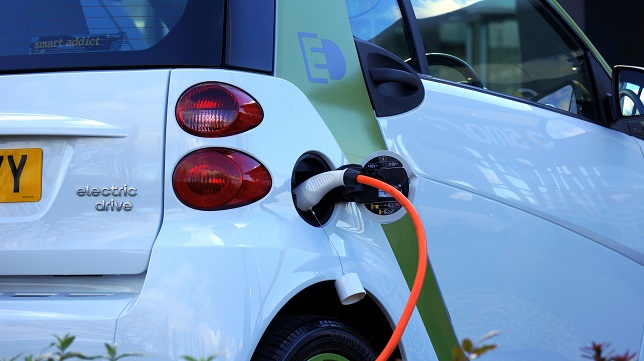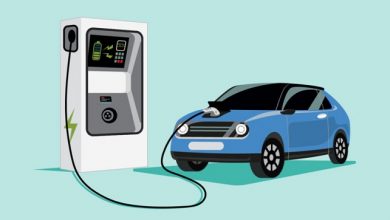Telematics in electric vehicles

Data is the new currency, and the collection and analysis of data are helping us solve many problems while increasing efficiency at the same time. Vehicle telematics essentially means the activity of vehicular data collection and its analysis. This data can be simple data, like the history of a vehicle’s movements. However, it can get extremely granular and complex, with sensors around the car possibly collecting data about the vehicle’s health, fuel consumption, and sometimes even the concentration levels of the driver. All this data can then be collated, presented, and analysed in myriad ways. Vehicle telematics has found its space in vehicle fleet management systems to help optimise the fleet’s operations. UPS were the first enterprise to recognise the power of telematics and apply it to its fleet of vehicles, achieving great success.
With telematics getting helpful in analysing various parameters of a vehicle and helping optimise it, it was logical that it would get involved in the next big step in personal mobility: the Electric vehicle. The electric vehicle concept is not new; some of the first commercially available electric vehicles were available in the 1890s. However, fossil fuels took over, and for the next century, they ruled our roads. However, the need for more environmentally conscious and sustainable mobility has made us come full circle back to electric vehicles. Telematics isn’t a new technology, either – the 1980s saw quite a few research programs funded, and GPS technology was available to consumers by the early 1990s.
Electric vehicles: the good, the bad, and the improvements sought.
Electric mobility is the obvious way forward for a few reasons: they are much more efficient than fossil-fuel-powered vehicles, and it isn’t even close. They are over twice as efficient as the most efficient petrol or diesel cars. Suppose the electricity sourced to run the electric vehicle comes from renewable resources like wind or solar energy. In that case, it utilises resources that would otherwise be wasted and help reduce climate change. However, battery technology does not allow them to recharge as quickly as their fossil fuel counterparts. You need at least an hour with a quick charger to top up a regular EV and their ‘tank range’ in comparison to the vehicles of today leaves a lot to be desired. This has given rise to range anxiety, which formerly affected only the motorcyclists with large engines and small fuel tanks. With battery technology improving by leaps and bounds, it is only a matter of time until electric vehicles offer range capabilities that are second to none. Interestingly, the journey to that point will be dictated by vehicle telematics.
Vehicle Telematics: The Next Step
GPS data allowed vehicle fleet managers to track vehicles, but advancements in the tech used onboard vehicles allowed us to follow a lot more data. For example, the amount of fuel consumed in a particular vehicle—if much more than other similar vehicles in the fleet—indicated a problem. The data transfer in real-time allows preventive measures like a tyre pressure monitoring system issuing a warning about a puncture or a driver monitoring system raising an alert about a driver who is sleepy or distracted to respond to an emergency. These advancements have come hand in hand with progress in the cloud and the Internet of Things, not to mention the advance of greater data bandwidth available to the consumer like 4G and 5G.
Vehicle Telematics in Electric Vehicles
Electric Vehicles have a very simple driveline, but managing it can get tricky when considering the ever-changing parameters a vehicle has to deal with, like the load, speed, acceleration, etc. We’ve had over a century to refine the fossil-fuel-powered vehicle, and some of that data can be used to help shape the responses of an electric car. Still, with the various energy efficiency demands included, a vehicle’s system quickly grows in complexity. For example, regenerative braking needs to harvest the vehicle’s kinetic energy, use the motors that drive it as generators this time, and charge the batteries – but the traditional brakes are still available on standby, in case hard braking is required. The switch from one system to the other is one that telematics can dictate. In addition, various other systems, like the HVAC system, the lights, the cooling system, etc., need optimisation. All this falls to the vehicle’s onboard computer, and all of this data can be used to optimise things further. Since there is such a high degree of electronic intervention in all systems of an EV, it is quite possible to bring about significant improvements in the vehicle’s performance and efficiency via software updates, not unlike electronic devices such as smartphones and computers.
Range anxiety is undoubtedly the biggest hurdle in an all-out adaptation of EVs. Vehicle telematics can help an EV user select a route that involves less traffic or goes past the nearest quick charging station – and can be refined further to redirect the vehicle to the closest available charging outlet as well. Fleet managers can use vehicle telematics to assign appropriate cars for a job. The same logic can be applied to self-drive fleets that are increasingly available in developed cities across the globe.
Even a personal EV owner benefits from vehicle telematics in a straightforward sense; the EVs of today with Internet connectivity will allow you to lock or unlock the car, start the air conditioning system, etc., all remotely with a smartphone loaded with the appropriate app. This can be expanded to offer vehicle alerts to the manufacturer if a vehicle system looks increasingly likely to fail, thus helping avoid a bad experience during a journey for the driver and reducing downtime for fleet managers.
India will be more concerned with the electric two-wheeler market since it will make up the overwhelming majority of sales here. Even here, telematics can make its mark for many of the same reasons. Currently, financing for electric two-wheelers does not meet the same levels as traditional ones because of a lack of data. Also, knowing the usage of riders will allow us to refine designs that will work for the Indian market, which offers many unique challenges to automotive manufacturers. A small but possibly important part of vehicle telematics can be the prevention of theft or recovery of a stolen vehicle.
The Final Step: The Autonomous Vehicle
The pinnacle of vehicle telematics is, of course, the autonomous vehicle. Trials are being conducted in different places globally and have been going on for years now, with varying degrees of success. The autonomous car will minimise energy consumption, travel time, and road accidents and undoubtedly increase productivity for those who might need to commute to work. The ideal vehicle will be autonomous – and electric. All of this will not be possible without telematics in electric cars.
Author:

Kiran Manohar Deshmukh
Group CTO
Sona Comstar
Kiran Manohar Deshmukh holds a bachelor’s degree of technology in metallurgical engineering from the Indian Institute of Technology, Bombay. He has significant experience in automotive components manufacturing and has worked in the areas of, among others, manufacturing, process control and design. He was honored with the Ashoka award by the Indian Society for Quality in 2006.
Published in Telematics Wire





